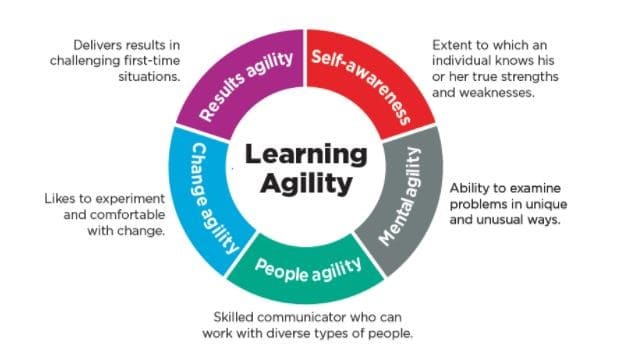The most important competency for success in today’s dynamic business environment.
Fifteen years ago, I took an HR leadership role with a global non-profit and was surprised to learn that they had a very well-developed approach to managing talent. This included a rigorous annual calibration process throughout the organization where managers were asked to evaluate their team through the lenses of both performance (looking backward) and potential (looking forward). The center piece of this approach was ‘learning agility’. When I read the definition for the first time, it was like flashbulbs going off! This was the secret sauce that all those talented people I worked with before had in spades.
Learning agility is the ability and willingness to quickly acquire new knowledge, adapt to novel situations, and apply insights from past experiences to solve unfamiliar challenges. In essence, learning agility is the key to staying relevant and thriving in an ever-evolving environment.
Developing learning agility involves a combination of cognitive, emotional, and behavioral factors. First and foremost, an individual must possess a growth mindset – the belief that abilities and intelligence can be developed through effort and learning. This mindset encourages one to embrace challenges and persist in the face of setbacks.

Additionally, being open to diverse perspectives and experiences is crucial. Engaging with different ideas and cultures fosters cognitive flexibility, enhancing one’s ability to draw connections across various domains. Curiosity is another fundamental trait – the desire to explore and question drives the acquisition of new skills and knowledge.
10 Ideas For Improving Your Learning Agility
- Seek Diverse Experiences – engage with people from different backgrounds, cultures, and industries to broaden your perspectives and thinking.
- Experiment and Innovate – test out new ideas, methods, or approaches to challenge your comfort zone and stimulate innovative thinking.
- Set Learning Goals – establish specific goals for acquiring new knowledge or skills, keeping your learning focused and purposeful.
- Read Eclectically – read books, articles, and materials from diverse fields to expand your knowledge base and connect ideas across disciplines.
- Learn a New Skill Regularly – dedicate time to learn a new skill or hobby regularly, whether it’s a musical instrument, a new language, or coding.
- Practice Reverse Mentoring – engage in reverse mentoring, where you learn from a younger colleague about new technologies, trends, and perspectives.
- Start a Side Project – initiate a side project that requires you to acquire new knowledge or skills, forcing you to learn and adapt on the go.
- Participate in Problem-Solving Challenges – engage in hackathons or problem-solving challenges that push you to think creatively and solve complex issues.
- Utilize Online Learning Platforms – enroll in online courses or platforms like Coursera, Khan Academy, or LinkedIn Learning to acquire targeted skills.
- Volunteer for Cross-Functional Projects – offer to participate in projects that involve teams from various departments, exposing you to different approaches.
Remember, learning agility is about being proactive, adaptable, and open to new experiences. By consistently challenging yourself and seeking out opportunities to learn and grow, you can enhance your learning agility and navigate a rapidly changing world with confidence.
